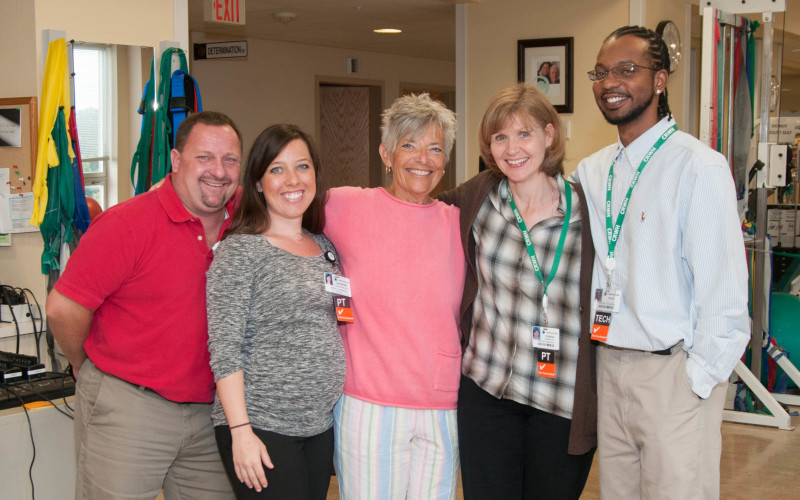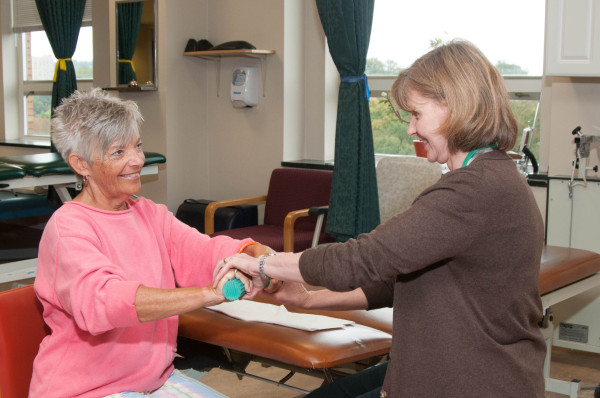Recovery from wrist injury shows the value of comprehensive rehab care

It was the slippery sidewalks of downtown Wilmington that sent Claudia Hughes to the emergency room at Wilmington Hospital. She hoped her wrist was only sprained, but as it turned out, she would need surgery and a plate in her hand.
One month later, after Dr. Matthew Handling, Claudia’s attending orthopaedic surgeon, removed her cast and pronounced her healed, she was surprised to hear him say that she would need physical therapy.
“The way they looked at the total person and the total challenge they faced was incredible.”
“Touch your thumb to your index finger,” he requested. To her surprise, she couldn’t do it.
That’s where the real story begins, the story that explains why Hughes wrote a heartfelt letter to the hospital thanking the physical therapy staff for their hard work and commending them on their patience, knowledge and attitude.
“I walked into physical therapy, not knowing what to expect,” Hughes said. “Physical therapist Theresa Rahman welcomed me, explained what was going on in my wrist and what work we would be doing.”

Over the next six weeks, Hughes got to know each member of the physical therapy team on a personal level. In addition to Rahman, staff members Pete Coleman, Annie Chesterfield and Travis Bailey steadily guided her to a full recovery.
But it wasn’t just her physical recovery that left Hughes in awe over her experience with the physical therapy team. “The way they looked at the total person and the total challenge they faced was incredible,” she said. This meant individualizing care, and modifying equipment and goals to meet each patient’s unique needs. In Hughes’ case it meant a suggestion to buy a swimming pool noodle to do a twisting exercise instead of buying expensive physical therapy equipment.
As a retired teacher who spent more than 40 years teaching special-needs children, Hughes was amazed to find the same attention and care required to successfully educate her students in the physical therapy team at Wilmington Hospital. “And it made all the difference,” she said.
She tells a story about a particular day toward the end of her rehab experience, when physical therapist Annie Chesterfield asked her to do a yoga-style plank exercise. Chesterfield had closely monitored her progress and knew that her wrist was strong enough, but Hughes no longer trusted her body and didn’t believe she could do it. After some spirited encouragement, Hughes gave it a shot. She ended up doing five planks, for five seconds each. “I was shocked,” she said.
By the time her rehab ended, she had regained both the physical and mental strength necessary to live a full life. But she didn’t stop there.
“My physical therapy goals have been met,” Hughes wrote in a letter to Christiana Care “However, I left Wilmington Hospital with more than restored strength in my hand and flexibility in my wrist. I carried confidence that my arm is strong, that I have four friends on the sixth floor, that Wilmington has a hospital that serves our community with excellence. Thank you for caring for me.”